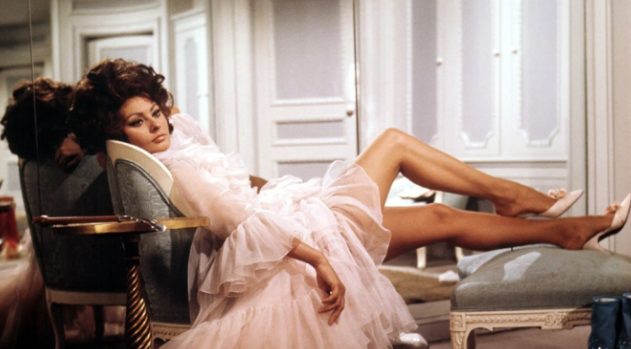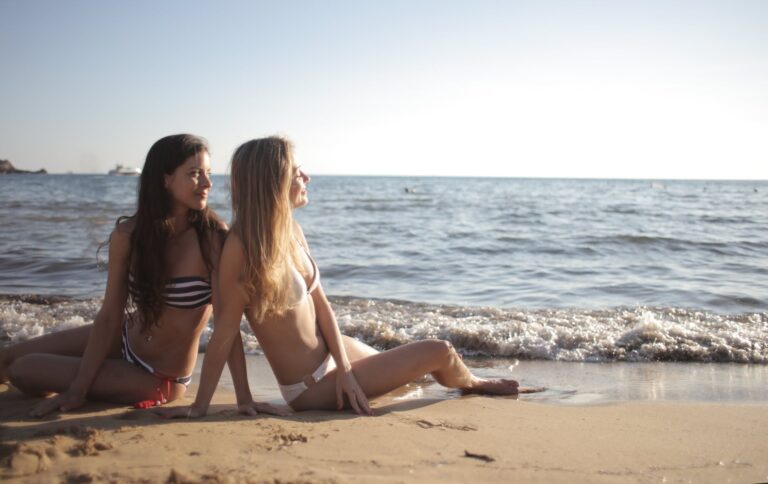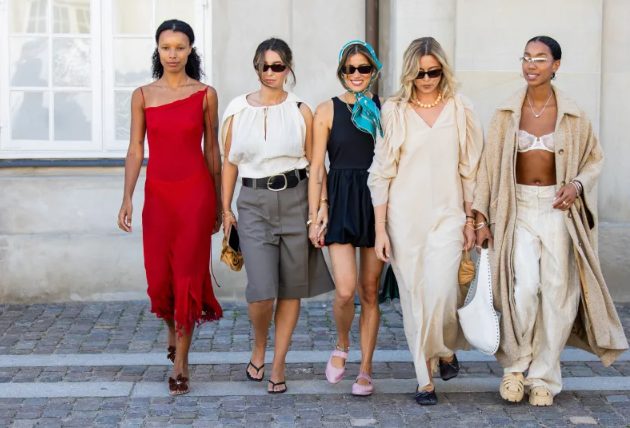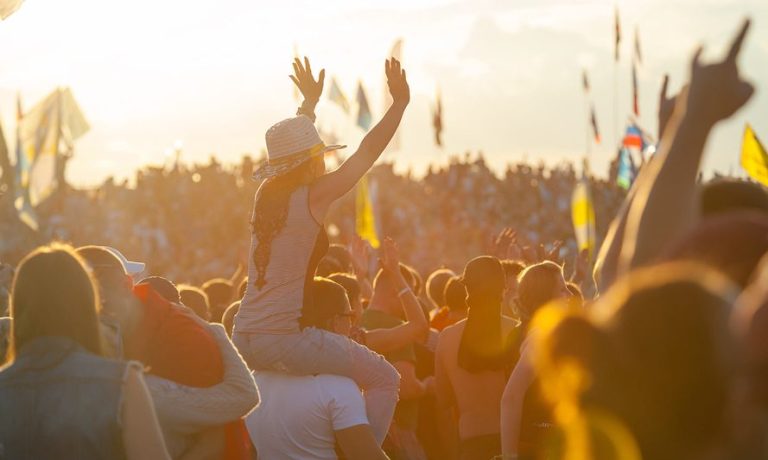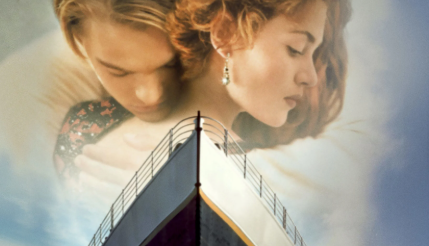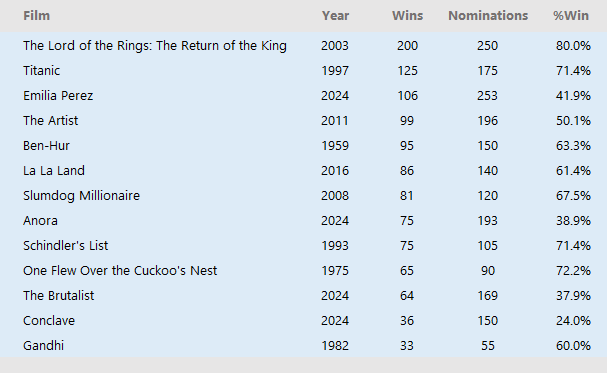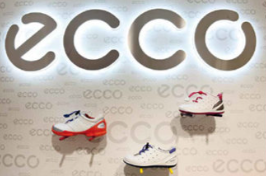Blondes. They’re said to have more fun and turn more heads on the street for their eye-catching ‘dos. We’ve been told men can’t help but love golden-haired ladies, who’ve embodied glamour from the earliest Hollywood days to modern times. Marilyn Monroe, Dolly Parton, and Gwen Stefani are just a few famous blondes that are irresistibly loved by women and men alike. Chances are you are personally a fan of an iconic blonde or have long thought about becoming one yourself. But being blonde comes with a price… like dealing with dumb blonde comments and many long and expensive trips to the hair salon. Still, there are some surprising benefits of living life as a blonde. Would you turn to the light side if it could impact your sex life or make you more money? Hair color may seem like a small detail but being blonde can have more consequences than you’d think — good and bad. Here’s the truth about blondes.
Men do prefer blondes
If the title didn’t tip you off, the movie Gentlemen Prefer Blondes suggested to viewers that men were particularly into light-haired ladies. We get it though. With Lorelei Lee played by the blonde Marilyn Monroe, even a die-hard brunette lover would swoon. While we’ve been told men love blondes, most of us have turned the other cheek, considering it just a stereotype. Who would have thought that science actually proved this expression to be true? In a study conducted by The Journal of Social Psychology, 110 men were showed pictures of women with different hair colors and were asked to rate them on attractiveness, health, dating potential, and parenting ability. The findings proved that men viewed the women with light hair to be more attractive, have better health, and appear more youthful. The study also showed that men base complex relationship decisions on a woman’s appearance. So, yes, ladies! Guys are judging your looks to decide whether or not you are a good life partner. If you thought all the time spent visiting the salon to get that luscious light hue or shopping for the perfect outfit went unnoticed, you were wrong all along.
Blondes get paid more
Perhaps you can brush off that blondes have more fun, but what if we told you they make more dough? A study conducted in 2010 by the Queensland University of Technology examined 13,000 Caucasian women and led to one eye-opening conclusion — blonde women get paid more (via Forbes). And it wasn’t just a dollar more here and there. Their experiment concluded that blonde women make 7 percent more income. That means if you have a salary of $50,000, a blonde worker doing the same job might make $3,500 more than you.
This isn’t the only study that proved this phenomenon. An experiment performed by Cornell University had waitresses complete an online survey about their physical characteristics, self-perceptions, and tip income. The findings concluded that blondes accrued more income than their red-headed, brunette, or black-haired counterparts. But it doesn’t stop there. Even in a different 60-day study, dark-haired participants were asked to change their hair color and record their tips in a real work-like setting. The women received significantly more tips while blonde. Blondes really do have more funds!
Blondes are better in bed
Sex is an important part of a relationship and can help deepen the connection between two people. You can learn a lot about yourself through your sex life and whether you explore new things or stick to the same ol’ routine. But did you know that your hair color has an influence over your romantic life?
In a survey of 1,500 men (via the Daily Mail), women with blonde hair were said to be the best in bed. The survey found that 36 percent of men said that blonde women were the best at sex. Meanwhile, 31 percent of men thought of brunettes as the best in bed. But before all you dark-haired beauties call bologna, there are some other notable findings from the survey that you may want to hear. The men in the same survey also said that brunettes were better kissers and more sensual.
Blondes take longer to get ready
They say beauty is pain but we say beauty is simply time-consuming — especially when it comes to a woman’s morning routine. Shaving, blow-drying, applying make-up, and curling your hair does not happen instantly!
Glamour shared a study conducted by Goody that found blonde women take an average of six minutes longer than women with darker hair to get ready. It may not seem like much time but over a week that’s 40-some minutes. The study also concluded that 75 percent of blondes stick to the same beauty regimen daily. Brunettes, on the other hand, were more likely to go out of the house without doing their hair or makeup at all. Whether you lighten your hair monthly and stay true to a strict make up routine or you go out bare-faced is totally a personal decision, but we’re sure all women look gorg either way!
Blondes have higher IQs
We’ve all heard more dumb blonde jokes in our lifetime than we’ve probably wanted to. Maybe they encouraged a good laugh, but jokes are jokes after all. How much truth do they really hold? In fact, dumb blonde jokes aren’t very accurate because blondes carry the highest IQs of all the hair colors. That’s right, listen up to this one.
An experiment conducted at the Ohio State University studied 10,878 women on their smarts. The findings were quite interesting. Of all the hair colors, blondes had the highest IQ with an average of 103.2. Close behind were brunettes with an average IQ of 102.7. Then came red heads at 101.2 and black-haired women with an average of 100.5. Blonde women were also more likely to be geniuses and less likely to have a low IQ than any women with other hair colors. Hold onto this piece of juicy information, blondies, and wow the crowd the next time some hotshot tries to tell a blonde joke. Tell ’em who’s the smartest!
Blondes are helped more often
In the 21st century, feminism is the magic word. Although we love a guy that will sweep us off our feet, women are fully functioning, powerful beings who definitely don’t need a man. But if you were to drop a belonging, do you think your hair color would influence a man’s likeliness to help return it to you?
Men’s Health shared an experiment performed by a group of French scientists at the University of South Brittany that had young women wear a tight white tee and one of three wigs with blonde, brown, or black hair. They instructed the women to walk in front of a male and drop a glove to see if he alerted the woman of the lost item or not. The findings were quite astonishing. The male pedestrians notified the blondes 76 percent of the time, whereas the brunettes were only given the glove at a rate of 59 percent. The women with black hair were only told they’d dropped their glove 57 percent of the time. This can perhaps be explained by men’s tendency to associate blonde hair with youth and health, which are often connected to fertility. So once again, gentlemen really do prefer blondes.
Blondes have more sex and think about it more often
You’ve probably heard that men think about sex every seven seconds. Although this is a myth, a majority of men do actually think about sex several times a day while most women think about it several times a week (via GQ). We’ve already covered that blondes are reportedly better in bed and them allegedly thinking about sex more may help explain why.
Glamour reported that dating site Match.com’s Singles in America survey revealed that blonde women are having the most sex. Yep, they’re also reportedly thinking about sex more than women of any other hair color: 27 percent of single blonde women ponder the idea of sex several times a week with brunettes following at 24 percent. Thinking about sex more often likely encourages you to get down and dirty, and experiencing more sex can probably make you better at it altogether. They do say practice make perfect, after all.
Endless shades of blonde
Hairdressers have probably heard more times than they can count, “I want to be blonde!” And after reading this article, many more women may be inspired to take the plunge. But blonde isn’t just one flat color. While we’re unclear on a total count for all the blonde shades out there, Matrix shared 24 of the top shades in 2018.
Platinum blonde is at the top of Matrix’s list and is perhaps one of the most desired shades of blonde for its Barbie-like resemblance. It is also one of the most difficult blondes to maintain. Lady Gaga is known for her icy-white mane, and others like Kylie Jenner, Jennifer Lawrence, and Miley Cyrus have all gone platinum at some point (via Insider). But platinum blonde isn’t for everyone, and that’s where the darker shades of blonde come in clutch. Taylor Swift, for instance, has sported a honey blonde bob, and Jennifer Aniston’s legendary medium-blonde shade has been a fan favorite for decades.
For those with darker skin and darker eyes, blonde can be a good option too. Beyoncé has rocked her own shade of chocolate blonde with brunette roots that fade into long golden locks.
Blondes marry richer men
Attention all women who dream of marrying a millionaire! In a study conducted by the University of Queensland, researchers found that blondes married men who made 6 percent more earnings than the husbands of other hair colors (via Business Insider). So while blondes are making 7 percent more themselves, between a blonde and her husband, they could be earning a total of 13 percent more income. The president of the International Blondes Association, Olga Uskova, informed News.com.au: “Blondes have wealthier husbands because we are more fun and outgoing, and men are more attracted to us.” She added, “Blondes also have a lot of confidence so we can date men who are powerful or important.”
While looks aren’t everything, being confident with your looks is likely to impact your relationship, job, and overall well-being. People with high self-esteem are also found to be happier so this can allow them to be more attractive overall. If your blonde hair makes you feel better about yourself, you’re likely to attract an umbrella of other positive outcomes like tying the knot with a wealthy man.
Blondes have more estrogen
Bottle blondes may reap many benefits of being a blonde but not this one. Science shows that natural blondes have more estrogen in their DNA (via Fox 5 Atlanta). Estrogen is the main female sex hormone and controls the reproductive system along with helping the development of secondary sex characteristics. Higher levels of estrogen can contribute to smaller facial features like a petite nose and a pointed chin. Because of having higher levels of estrogen, blonde women may appear more feminine and have less body hair.
It may sound like blondes have the DNA of golden goddesses but this only applies to natural blondes, who are, in fact, very rare. On the flip side, Medical News Today explained that high levels of estrogen can have some negative effects for women like heavy periods and weight gain. So blondes may enjoy some incredible benefits stemming from a higher estrogen level but other effects are not so pretty.
Natural blondes are very rare
Yes, there are plenty of blondes in this world, but most of them are far from natural. In fact, Natalia Ilyin writes in her book Blonde Like Me: The Roots of the Blonde Myth in Our Culture that only 2 percent of the population is naturally blonde. Blonde hair is caused by a very small genetic mutation in your DNA that alters the letter A to G in the sea of 3 billion possible letters (via National Geographic). The change is reportedly responsible for those beautiful, sought-after golden locks that many parents probably hope never darken on their little ones.
But most children with that ridiculously cute white-blonde hair often experience darker locks by the time they turn 10 years old (via Live Science). The determinant of hair color is melanin — a dark pigment found in the hair, skin, and eyes. Melanin is the same component that determines whether or not you tan in the sun. The darkening of hair happens because the genes that determine hair color do not stay constant throughout one’s life. So cherish that natural blonde while you can, little ones, because you may have to convert to being a bottle-blonde later on in life.
Blonde women are more likely to hold a position of power
We already squashed the “dumb blonde” stigma so this one shouldn’t come as too much of a surprise. Forty-eight percent of women who are chief executives at S&P 500 companies have blonde hair, according to a group of researchers at the yearly Academy of Management Meeting held in 2016 (via HuffPost). And this isn’t just a random occurrence. Experts believe there may be more strategy or explanation behind this than most would think. Blonde is thought to give a softer look to women and can give them more leeway in a dominating job role.
Jennifer Berdahl presented these power blonde findings during the Academy of Management Meeting in ’16. Berdahl explained, “If the package is feminine, disarming and childlike, you can get away with more assertive, independent and [stereotypically] masculine behavior.” Having blonde hair can help take the intensity off of a female CEO and relay a more favorable appearance. Light hair is also associated with youth and health, which can give blonde women a leg up in their careers.
Blondes have more sexual partners
One of the best parts of Sex in the City is living vicariously through Samantha Jones’ sex life. We love watching her captivate men and down martinis with her sultry look-at-me persona. She’s always on the hunt for men, and it’s no coincidence she’s the one that has blonde locks out of the four BFFs. Channel your Samantha Jones spirit animal for this one ’cause it’s gonna get steamy!
Glamour shared a survey from Match.com that found women with blonde hair had more sexual partners. The results showed blondes had an average of 10.1 sexual partners with redheads close behind at 9.4 partners. Brunettes were in last with 7.8 partners. That’s not all though. The same survey found that blondes were most likely to have a one-night stand. Sixty percent of blondes admitted they had a one-night fling, followed by 58 percent of redheads and 51 percent of brunettes. We see a pattern going on here. Blondes are really living their best sex lives!
Blondes have more hair and lose more of it
Many people have nightmares about losing their hair. But in reality, we lose hair every day. Diane Minar, a senior scientist at Unilever, confirmed to Self that losing hair is normal and explained that the average person loses 50 to 100 strands of hair a day. The amount of hair you lose depends on your hair color because it determines how many individual hair strands are found on your head.
So who exactly is shedding the most strands? Blondies are losing the most hair, but, before you golden-hued ladies freak, you might be relieved to know that this is because blondes have the most hair. Minar stated that the average woman with blonde hair boasts more than 450,000 individual strands on her head, whereas a woman with black hair only has around 60,000. In the middle range sits brunettes and redheads.
So, there you have it. Blondes have more sex, more money, and apparently more hair. Let’s start a blonde revolution!


